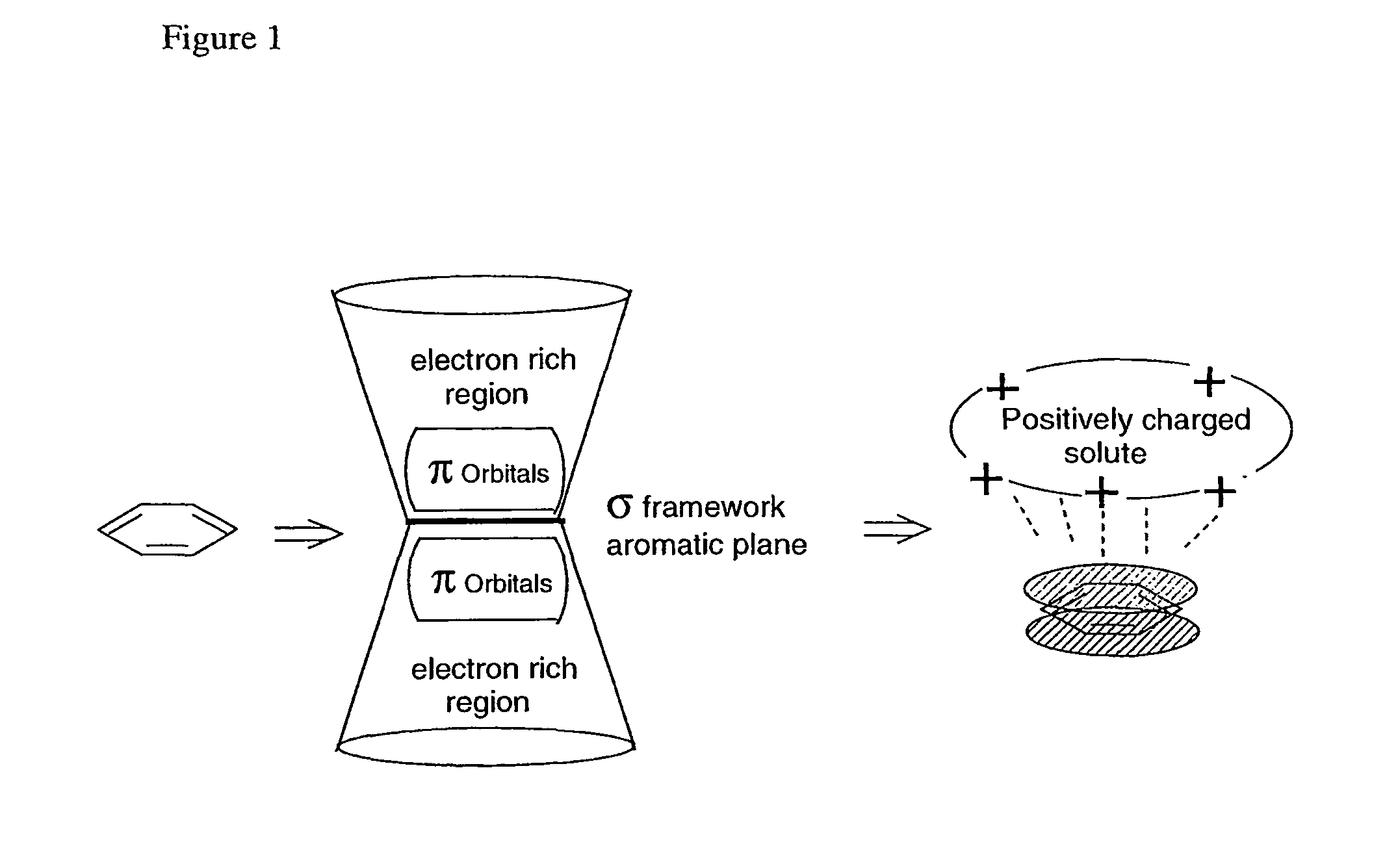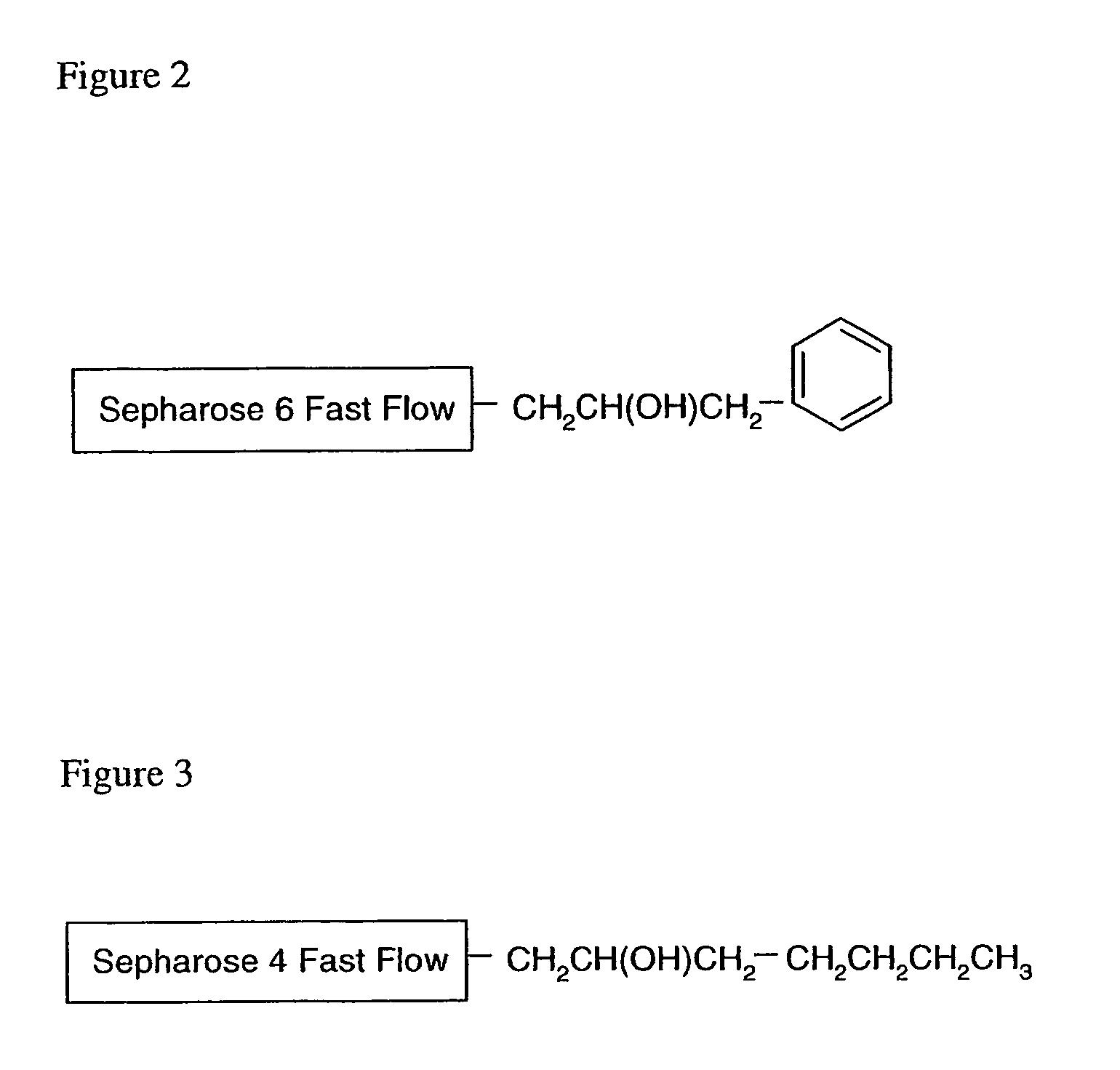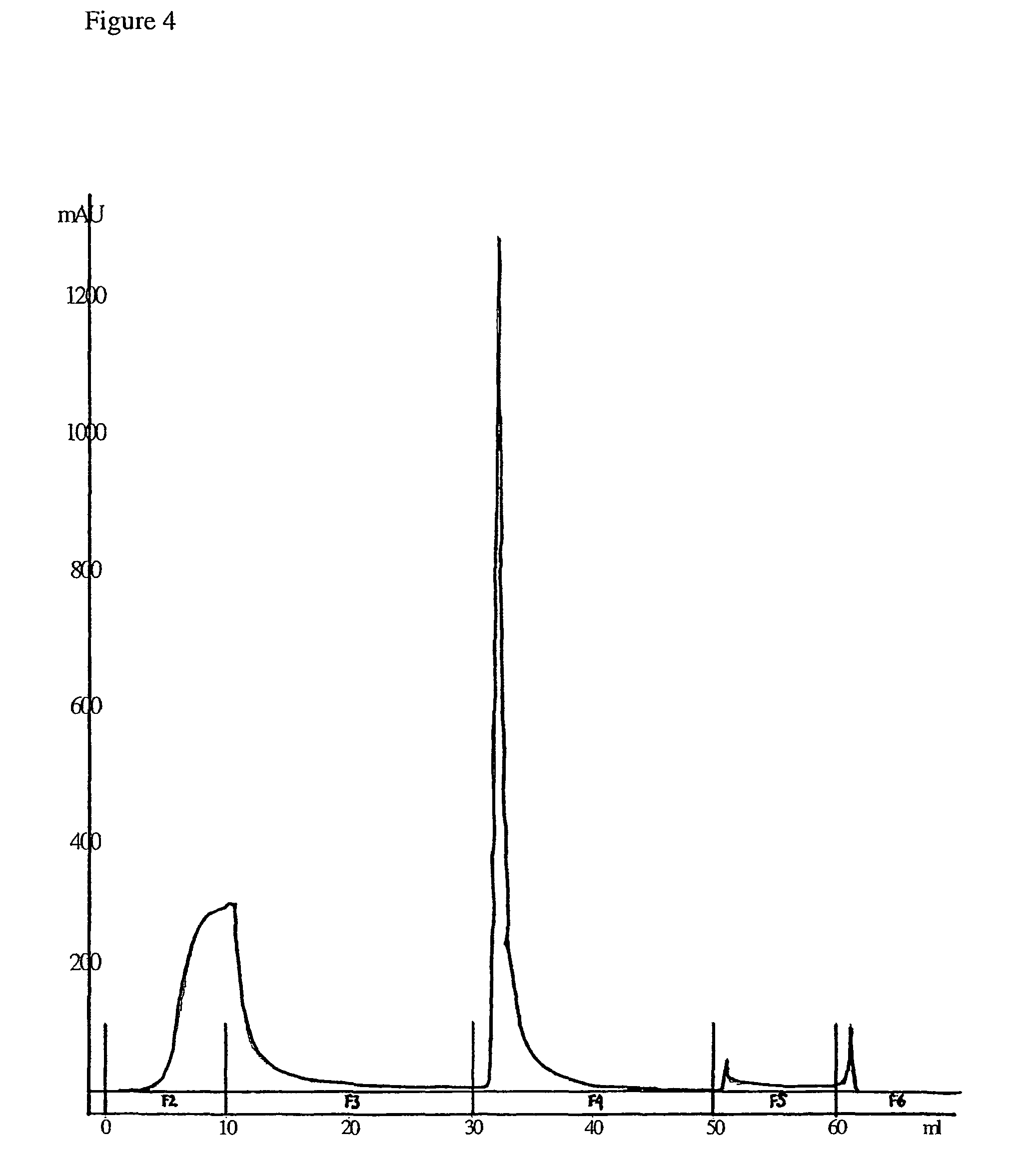Separation method
a separation method and separation method technology, applied in the field of separation, can solve the problems of inability to achieve selectivity, limited ion-exchange chromatography, and inability to detect salts in hic methods,
- Summary
- Abstract
- Description
- Claims
- Application Information
AI Technical Summary
Benefits of technology
Problems solved by technology
Method used
Image
Examples
Embodiment Construction
[0032]A first aspect of the present invention is a method of separating a compound from a liquid, which method comprises the steps of[0033](a) Providing a separation matrix comprising at least one uncharged ligand;[0034](b) Providing a liquid wherein the compound to be separated is present in a positively charged state;[0035](c) Contacting said matrix with said liquid during a sufficient period of time for adsorption of the compound to the matrix to occur; and[0036](d) Removing the liquid from the matrix; wherein said uncharged ligand possesses a quadrupole or dipole moment and the adsorption of the compound to said ligand is predominated by cation-π interaction.
[0037]In one embodiment, the compound to be separated is an organic molecule, such as a biomolecule, which can be a cation under the appropriate pH conditions. Thus, the compound can be a positively charged protein or peptide. In a specific embodiment, said protein or peptide comprises one or more of the basic amino acids, i...
PUM
| Property | Measurement | Unit |
|---|---|---|
| ionic strength | aaaaa | aaaaa |
| ionic strength | aaaaa | aaaaa |
| ionic strength | aaaaa | aaaaa |
Abstract
Description
Claims
Application Information
 Login to View More
Login to View More - R&D
- Intellectual Property
- Life Sciences
- Materials
- Tech Scout
- Unparalleled Data Quality
- Higher Quality Content
- 60% Fewer Hallucinations
Browse by: Latest US Patents, China's latest patents, Technical Efficacy Thesaurus, Application Domain, Technology Topic, Popular Technical Reports.
© 2025 PatSnap. All rights reserved.Legal|Privacy policy|Modern Slavery Act Transparency Statement|Sitemap|About US| Contact US: help@patsnap.com



